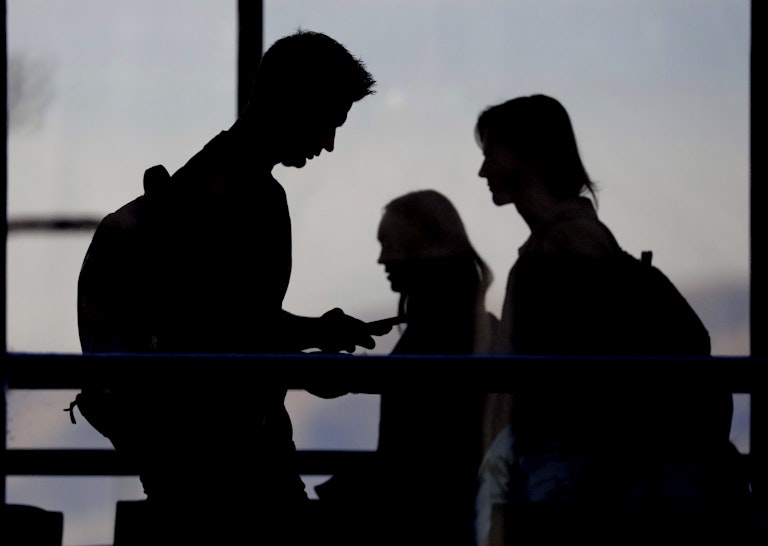Ronald Reagan Institute
The Most Anxious Generation
By Janet Tran

By Janet Tran
Statistics exposing the levels of anxiety amongst millennials and generation Z were widespread even before the world experienced the global pandemic. Now, our adolescents and young adults are afflicted with more mental health issues than any generation before. Perhaps this is due to our increased understanding about mental health -- or, perhaps, this is due in part to overdiagnosis. Whatever the case, studies show one in five adolescents experience a serious mental health disorder, such as depression, anxiety, or hyperactivity, at some point in their lives.
Further, a 2019 Blue Cross Blue Shield report found that millennials are seeing their physical and mental health decline at a faster rate as they age compared to the preceding Generation X. The mental health epidemic and the current COVID-19 pandemic are now deeply interconnected. Long-term social distancing and isolation due to COVID-19 is a prime breeding ground for mental health challenges to grow and fester. While the U.S. death toll of COVID-19 rises, we also know that mental illness untreated can be fatal.
Schools must prioritize this crisis now as they work to implement distance learning, and as they prepare for students to return to campus. In a recent Kaiser Family Foundation poll, nearly half of adults in the United States reported that their mental health has been negatively impacted due to stress over COVID-19, or coronavirus. When it comes to college-aged students, the National College Health Assessment indicates that around one in four students suffers from a diagnosable mental illness, while 60-70 percent report feeling overwhelmed or very lonely. Additionally, epidemics have been shown to induce general stress and may lead to new mental health and substance use issues. It is clear that during this time of uncertainty and fear, it is crucial to support students’ health both during the pandemic and afterward.
In the pre-COVID world, education leaders were developing holistic models that supported students' well-being, including critical staffing, like school counselors or psychologists. Wraparound services are another common form of student care management, though they've largely been a focus in schools with high populations of at-risk children. But after students across ages and grades have been isolated for months at a time, these services will look much different. So how exactly should schools compensate in the new academic year?
Kirsten Perry, Social Emotional Learning Specialist at Chicago Public Schools and 2018 School Counselor of the Year, emphasized the critical need for social emotional learning (SEL) in schools during this time. She explained that, due to increasing disengagement, it is more important now than ever to “engage classrooms because students need relationships with their teachers in order to want to come to class and be reconnected to their peers.” Though Perry and her colleagues are working on how to do that on a virtual platform, she explained that SEL skills such as time management, self-regulation, and goal setting, should be focused on even more now.
Parents also need resources as they battle their own pressures while trying to raise well-adjusted kids during quarantine. The Atlantic’s “Childhood in an Anxious Age,” by Kate Julian, discusses the challenge of parenting children with anxiety and how to better support them. Her primary argument is that over-accommodating children’s anxieties can be harmful; sometimes we need to be stressed or anxious when the situation warrants it. If we are always protected from those feelings, we will never learn how to cope with them. While it may feel counterintuitive as a parent, allowing some space for anxiety during a global pandemic may be healthy.
Experiencing the unknown is always stressful, and the current heightened state of collective anxiety and fear will certainly negatively impact our most vulnerable students. As the Fall approaches, and the yet-to-be-seen new realities of school reopenings reveal themselves, prioritizing student health should be at the forefront. Laura Ross, 2020 School Counselor of the Year from Five Forks Middle School in Lawrenceville, GA, contended that the most effective way to reach students and their families is easy access to information – through email, phone, and video chat. We can support our students by “building community, connecting with them, and understanding how they’re feeling and experiences they’ve had.”
Therefore, the most important thing for students returning to school in the Fall will be having multiple resources at hand, including someone to talk to. First and foremost, they will depend on their teacher, however the role of administrative and support staff should be reconsidered as well. Students may rely on hotlines to talk to a counselor or psychologist during the COVID-19 crisis, but there should be additional services and professionals available after the pandemic, too. While institutions have already implemented short-term, brief social-emotional and mental health support lines, the need for mental health services spans beyond the scope of this crisis.
Let’s build the infrastructure we need to empower the whole child to be agile and responsive to their emotions while achieving academic success. If we get this right now, we will have systems to support our learners before the next global crisis.
Join Our Newsletter
Never miss an update.
Get the latest news, events, publications, and more from the Reagan Institute delivered right to your inbox.
